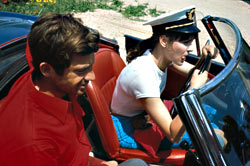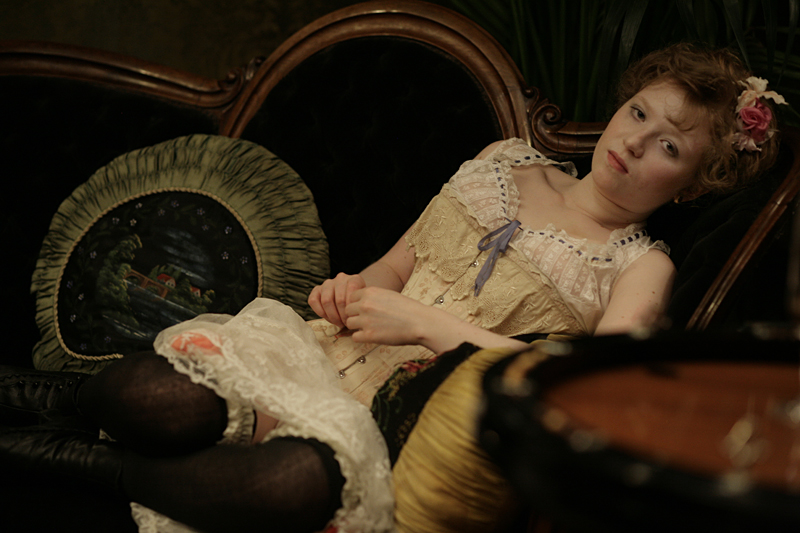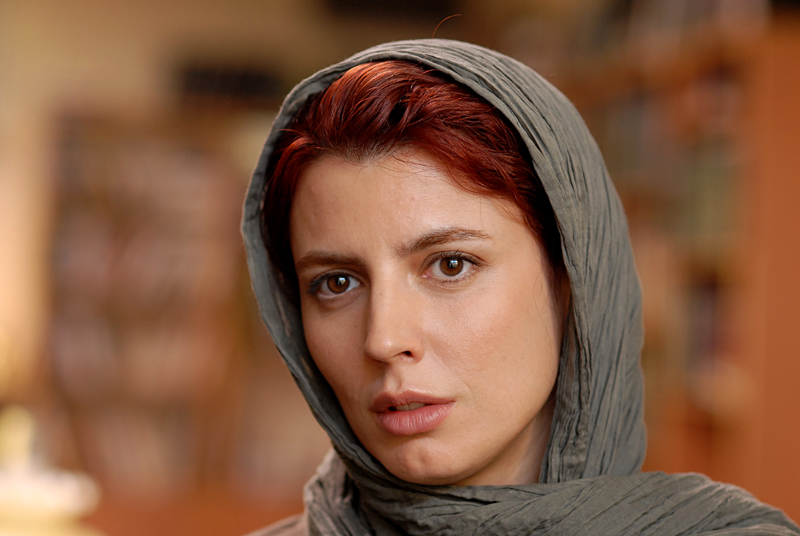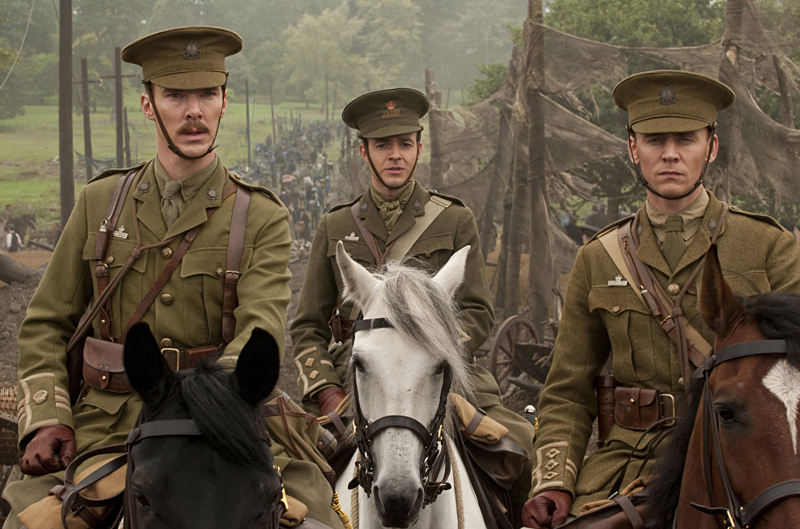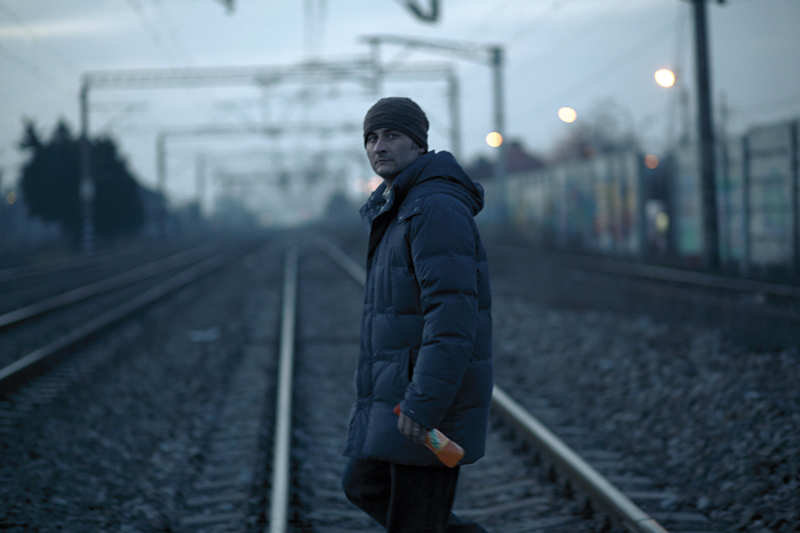The epitome of New Wave pop art romanticism, the 1965 Pierrot le Fou is as evocative of its epoch as a Warhol or a Beatles album. Pierrot was partially inspired by the script for Bonnie and Clyde, which had been sent to Jean-Luc Godard, and is almost linear—at least for J.L.G. Made in the middle of Godard’s greatest period, it’s a grand summation of everything he’d achieved since Breathless—collage structure, autonomous sound, interpolated set pieces—as well as his version of a location thriller. Shot in wide-screen and saturated primary colors, mainly in the south of France, Pierrot looks sensational—as does Godard’s then-wife, Anna Karina, who, even as she captivates and abandons co-star Jean-Paul Belmondo, is herself the movie’s documentary subject. Karina’sinsouciant grace and spontaneous outbursts parallel that of the film: Culturally, Pierrot le Fou is all over the map, juxtaposing Sam Fuller (in his celebrated party scene) with Federico Garcia Lorca, the war in Vietnam, and Auguste Renoir. (“Let’s go back to our gangster movie,” Karina tells Belmondo after an idyll on the beach.) Few films have ever been more hostile to Americans and more devoted to their cars. Pierrot is hardly devoid of Godardian misogyny, but whatever personal bitterness infuses the filmmaker’s representation of Karina, the movie itself radiates joy of cinema.
Pierrot le Fou: Jean-Paul Belmondo and Anna Karina Are the Sexiest Couple of 1965
